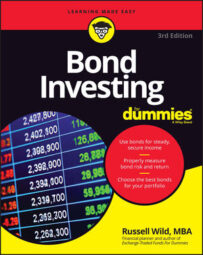An entire industry is devoted to rating companies by their financial strength. The most common ratings come from Moody’s and Standard & Poor’s, but other rating services exist, such as Fitch Ratings, Dominion, and A.M. Best.
Your broker surely subscribes to at least two of these services and will be happy to share the ratings with you.
What do bond credit quality ratings mean?
The highest ratings — Moody’s Aaa and Standard & Poor’s AAA — are the safest of the safe among corporate bonds, and those ratings are given to few corporations. If you lend money to one of these stellar companies, you should expect in return a rate of interest only modestly higher than Treasuries (even though S&P in 2011 downgraded Treasuries to a “mere” AA rating).
As you progress from these five-star companies down the ladder, you can expect higher rates of interest to compensate you for your added risk. This table shows how Moody’s, Standard and Poor’s, and Fitch define bond credit quality ratings.
| Credit Risk | Moody’s | Standard & Poor’s | Fitch |
|---|---|---|---|
| Investment grade | |||
| Tip-top quality | Aaa | AAA | AAA |
| Premium quality | Aa | AA | AA |
| Near-premium quality | A | A | A |
| Take-home-to-Mom quality | Baa | BBB | BBB |
| Not investment grade | |||
| Borderline ugly | Ba | BB | BB |
| Ugly | B | B | B |
| Definitely don’t-take-home-to-Mom quality | Caa | CCC | CCC |
| You’ll be extremely lucky to get your money back | Ca | CC | CC |
| Interest payments have halted or bankruptcy is in process | C | D | C |
| Already in default | C | D | D |
If you are going to invest in individual bonds, diversification through owning multiple bonds becomes more important as you go lower on the quality ladder. The risk of default is much greater down there, so you’d be awfully foolish to have all your eggs in a basket rated Caa or CCC. (Default in bond-talk means that you bid adieu to your principal — or at least a good chunk of it.)
Keep in mind that one risk inherent to corporate bonds is that they may be downgraded, even if they never default. Say a bond is rated A by Moody’s. If Moody’s gets moody and later rates that bond a Baa, the market will respond unfavorably. Chances are, in such a case, that the value of your bond will drop.
Of course, the opposite is true, as well. If you buy a Baa bond and it suddenly becomes an A bond, you’ll be sitting pretty. If you wish to hold your bond to maturity, such downgrades and upgrades are not going to matter much. But should you decide to sell your bond, they can matter very much.
Diversifying your bonds not only by company but also by industry is a very good idea. If, say, the utility industry experiences a major upheaval, the rate of both downgrades and defaults is sure to rise. In such a case, you would be better off not having all utility bonds.
One of the latest crazes in the world of funds, especially exchange-traded funds, is to compartmentalize bonds the way stocks have been compartmentalized into various industry sectors. You can now, for the first time, buy a fund that allows you to invest in bonds issued by only certain kinds of companies, be they financial companies, utility companies, or the industrial sector of the corporate economy. Bad idea. Steer clear.
What is the risk of default?
How often do defaults occur?
According to data from Standard & Poor’s covering the years 1981 to 2010, the odds of a corporate bond rated AAA or AA defaulting were rather minor: less than 1 percent over a period of 20 years. Of all corporate bonds, only a select few are given those gloriously high ratings.
Moving down the ladder, as you would expect, the default numbers jump. Bonds rated A defaulted at a rate of about 5 percent over 20 years. Among BBB bonds, more than 20 percent went belly up within two decades.
By the time you get down to CCC bonds, the rate of default was over half within two decades. Of course, these rates can vary greatly with economic conditions.
In fact, the rates of default over the past decade or two have been much higher than previous decades, to a great extent the result of the housing market crash and the subsequent credit bust, which led to 265 corporate defaults in 2009 — the largest number since the Great Depression.
The outcome represented a single year default rate of 0.32 percent for investment-grade bonds (higher quality bonds, as deemed by the ratings agencies) and 9.45 percent for speculative-grade bonds. Among the defaulters in that tough year for corporate bonds were Ford Motor Co., General Motors, Reader’s Digest, Red Roof Inns, and The Great Atlantic & Pacific Tea Co.
The year prior to the mess of 2009 wasn’t pretty either. Some 126 corporations went under in 2008, including Lehman Brothers, the fourth largest investment banking house in America, with more than $600 billion in assets. Thought to be “too big to fail,” Lehman collapsed in a matter of weeks — the largest bankruptcy in history. Lehman’s bondholders lost more than 80 percent of their savings.

